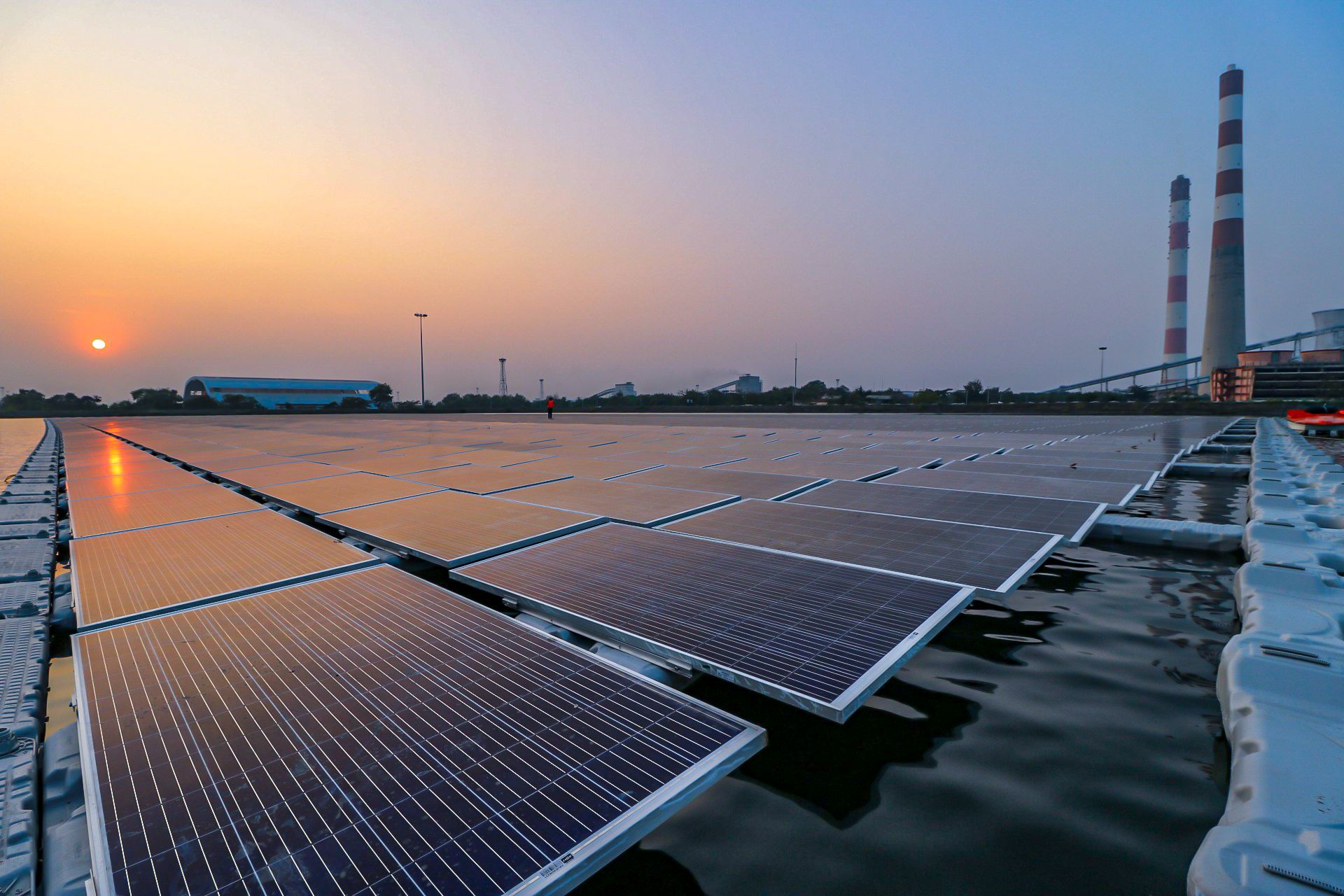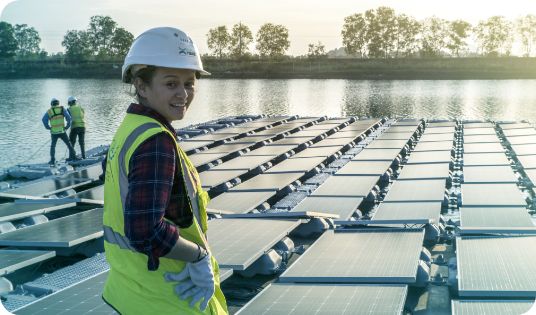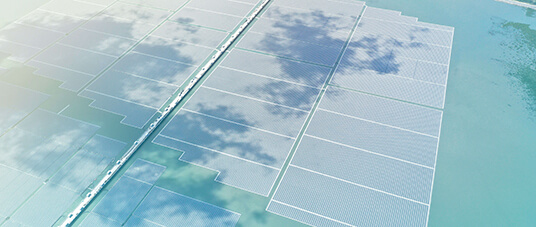
HOW FLOATING SOLAR CAN CHANGE THE DYNAMICS OF RENEWABLE ENERGY SECTOR?
The firsts key notes that we can mentioned is important that floating solar, especially in India, is gaining a lot of traction. It has already influenced environmental/economic/social section more than any other renewable segment.
Environmental benefits:
- Minimizes water evaporation (water& ecosystems conservation),
- Improves water quality and reduces algal bloom,
- Make PV possible when there is a lack of space
Economic benefits:
- Converts unused spaces into profitable areas,
- Enhances electricity generation (thanks to the cooling effect),
- Reduces grid-connection costs and major infrastructures investments
Social benefits:
- Preserves valuable lands for other uses,
- Rehabilitates contaminated areas with clean energy,
- Compatible with recreational activities,
- Environmental amenity, positive aesthetics
Learn more about floating solar benefits here !

Photo: Raw Water Pond, India | 5.4 Mwp
Floating solar is the third pillar to the Solar PV sector
This is the appropriate sentence to describe floating solar importance in the renewable energy sector now. With the following advantage, floating photovoltaic can change the current dynamics of the renewable energy sector:
- FPVs are Land neutral,
- Reduce water evaporation,
- Higher gains in energy production due to lower temperature coefficients,
- Less soiling losses,
- Lower O&M Expenses,
- Ease of implementation,
- And Hybrid power generation with Hydel power systems.
Key notes and analysis of floating solar in India
India has huge untapped potential for floating PV. This can be effectively envisaged with proper planning and the right vision. Moreover, standards on ground-mounted and rooftop solar projects are well established and proven.
Today, those standards are used as references for floating PV plants by most of the stakeholders. However, we need to develop an international dedicated standard for FPV plant design. Obviously, these standards need to be based on field test results, analysis, theoretical and empirical studies.
Considering the creation of global FPV standards, it must allow building safe FPV while doing viable and profitable investments. We believe proper Guidelines and regulations are needed to ensure that FPVs are done in a safe and proper manner. In an other hand, this will reassure investor on the technologies and master the risk. At this time, we are still striving hard to get some standards to the Indian market to deliver benchmark projects.
For this purpose, Ciel et Terre is deeply involved all around the world to participate in the creation of standards with authorities like CEA (France), NREL (USA) , NEDO (Japan). We want to put in place on-field testing and FPV instrumentation to deeply understand the behavior of FPV plant, not only in a testing chamber, but also on real scale installation.
HOW FLOATING SOLAR PROJECTS ARE DIFFERENT FROM OTHER PV INSTALLATION IN TERMS OF INSTALLATION AND MAINTENANCE?
First, the installation is different because it requires experienced engineers and technicians. The know-how of floating array load/distribution and buoyancy is very crucial to implement. Indeed, any wrongdoing during installation will be a disaster in the making.
To begin with, it is crucial to visualize the site conditions. Then, the use of appropriate tools and the understanding that each site as its specific requirements is central to consider during installation phase. For instance, the anchoring materials might be different from a site to another. We are aware of the quality issues by other players owing to bad installation recently. As a whole, the onus is on us now to develop quality projects in India, and asset is protected for 25 years.
Secondly, the Operation and Maintenance work is also quite different. The cost is cheaper than a ground-mounted system, as there is less soiling due to the water around, plenty of water availability for cleaning. Of course, conventional brush cleaning would be reducing the O&M expenses. During engineering design suite creation, moisture prevention of electrical equipment should be tended to. Last but lot least, all equipment needs to be water-resistant and friendly with a moisture environment.
Ciel & Terre India’s future plan in floating solar
We consider India will be the biggest market for floating solar worldwide.
Therefore, we are investing in new assets to provide our latest designs on a large scale. We believe floating solar solution will be one of the main enablers for the PV sector.
Recently, we started our international Global R&D centre in India to support worldwide projects. This new structure provides us more technical robustness in terms of optimal technology, standards, testing, and quality control. Our target is to complete a minimum 2GWp installation with our Hydrelio® technology by 2023.







